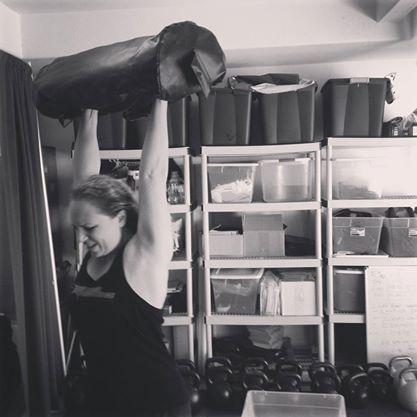I Do Cardio, I Don’t Need To Strength Train Too
2021-03-3
Jessica Bento, Physical Therapist (Co-Creator of DVRT Restoration Certification, DVRT Pelvic Control, Knees, and Shoulder Course)
I’m sure I have written on this topic numerous times but it still seems to be something that comes up all too often. “I do cardio, why do I need to strength train?” I hear this all the time, especially from a lot of my girlfriends, and now that we are all getting older I really do want them to understand how important strength training.
So often I see or hear of women spending hours at the gym, doing the elliptical, or spending hours on the stair master and that is all they do for their exercise routine. Don’t get me wrong any form of exercise is better than doing nothing at all but I think women, more so then men, tend to feel that if they do cardio it checks the box of strength training as well.

Yes, forms of cardio all have a resistance component, so inherently some strength is being built but women, especially as we age, need to focus on maintaining and building muscle strength. So a combination of not only cardio but resistance training needs to be apart of a regular routine. In fact, science has shown how important resistance training is for women in health, especially bone density (you can read HERE)
As much as we would love to believe the saying, “ age is just a number,” age does matter. As we age we lose muscle mass, strength, and function. Muscle mass decreases 3-8% per decade after the age of 30 and increases aft the age of 60.
View this post on Instagram
Decater Performance shows that building strength training is never too late at any age.
View this post on Instagram
DVRT Master, Larisa Lotz, shows how we can introduce these ideas of strength training to people at any age and it becomes increasingly more important for women as we get older to not build just strength, or worry about weight loss, but to be healthy and resilient!
This loss is a big contributor to disability in older people. That is why we start to see our grandparents or even parents start to have balance problems, slowed metabolisms ( my mother eats one meal a day and says she is satisfied, I on the other hand can’t function until I have had breakfast), as well as seeing increased body weight.
View this post on Instagram
In other words, if you don’t use it, you lose it. Probably the most used phrase of my physical therapy career ( and might make me seem old too but who cares) and what I have learned over the years is that it’s not necessarily about building just strength, but building functional muscle. I’m sure you are saying what the heck is the difference?
I like to look at functional muscle or functional strength as how efficiently we can move. So we aren’t going to spend time trying to isolating all the muscles and body building since that has nothing to with how we move, but instead spend time working on strengthening movements and look at patterns vs parts.
This is maybe why women don’t want to strength train or make it apart of their workout routine, maybe they think it takes too long, maybe it will make them too sore, or the best one…maybe they will get too big and muscular. Really those are valid points but if you perform resistance training properly you should never get too sore, also most workouts really should be no more than 30-45 minutes or so and the I don’t want to get too big part is just strange to me, where did this come from? I am sorry regular strength training is not going to make you huge, maybe defined, maybe it will look like you have some muscles, but you are not going to turn into the hulk.
We now have access to some amazing tools that allows us to train this way and train anywhere which has really opened the door for more functional training which allows us to build more functional muscle. This leads me to a little story about someone that had commented on one of my instagram posts the other day saying, how is he supposed to do all these exercises if he doesn’t have any Ultimate Sandbags or kettlebells, and my response might have been rather blunt, but I said its not all that possible. These tools allow us to perform movements that other tools don’t allow for. The tool really does matter, I choose all sorts of different tools based on my intent, if I am in the clinic I can choose from tape, soft tissue tools, all sorts of modalities…that goes with my training tools as well. Each tool serves a purpose and has intent, I can’t just interchange stuff and hope to get the same result.
So what do these workouts look like? What are the results of these workouts I can expect?
Don’t miss the final days to save 30% on our Ultimate Sandbags HERE, DVRT Workout Programs HERE, or our Online Certifications/Courses HERE. Just use code “july21” through Sunday!
© 2025 Ultimate Sandbag Training. Site by Jennifer Web Design.







